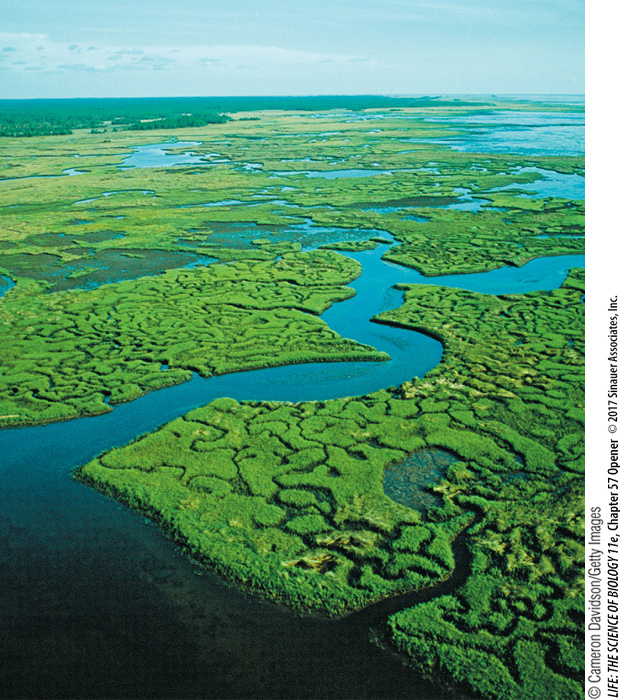Chapter Introduction
57
key concepts
57.1
57.2
57.3
57.4
57.5
Ecosystems

investigating life
Food Webs in an Acidic and Warming Ocean
There is no dispute that the burning of fossil fuels over the last two centuries has increased Earth’s atmospheric CO2 concentrations. Estimates show that oceans are absorbing about 48 percent of all atmospheric CO2. Marine primary producers use some of the human-
Estuaries are places where the dual effects of ocean acidification and temperature on primary producers and their food webs may be particularly relevant. Among the most productive ecosystems on Earth, estuaries support a diverse array of marine organisms, including commercially important fish species. Because estuaries are at the interface between land and sea, they have been highly affected by humans through intense overfishing, habitat destruction, and pollution from rivers. Estuaries also experience warm water temperatures, a condition that could intensify with global warming. But estuaries may also be places where the effects of ocean acidification could be mitigated if primary producers such as macroalgae and sea grasses are able to sequester CO2 and provide more food and habitat for higher trophic levels.
Research on estuaries was conducted by a group of researchers on the western coast of Sweden. The group focused on a food web that includes algae primary producers and invertebrate consumers and exposed this food web to different conditions of CO2 and temperature. What they found suggests that ocean acidification and temperature affect food webs in complex ways that may be hard to predict.
How will food webs respond to the multiple effects of ocean acidification and warming in marine ecosystems?